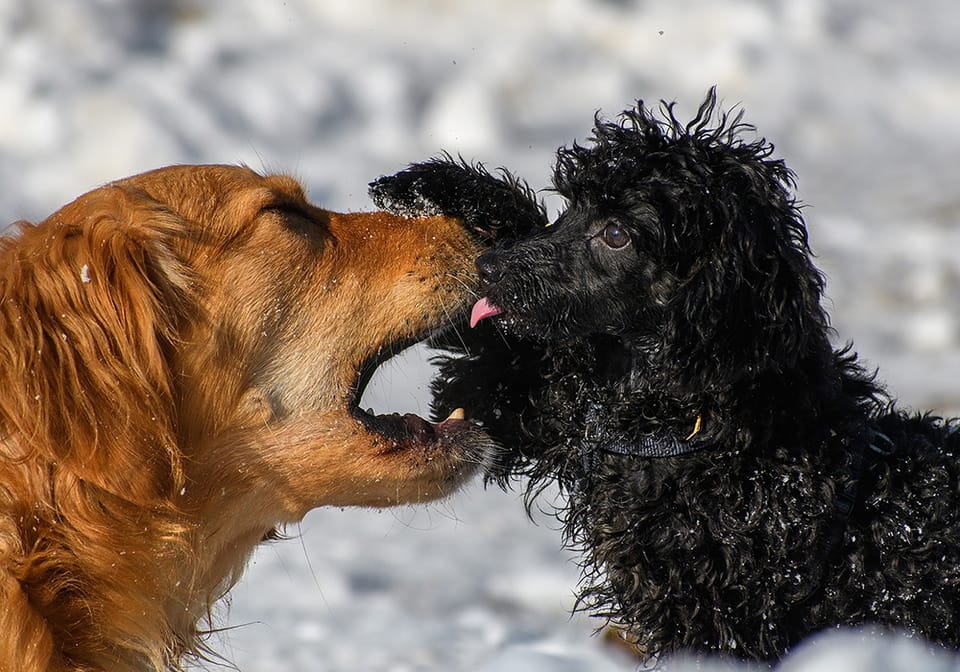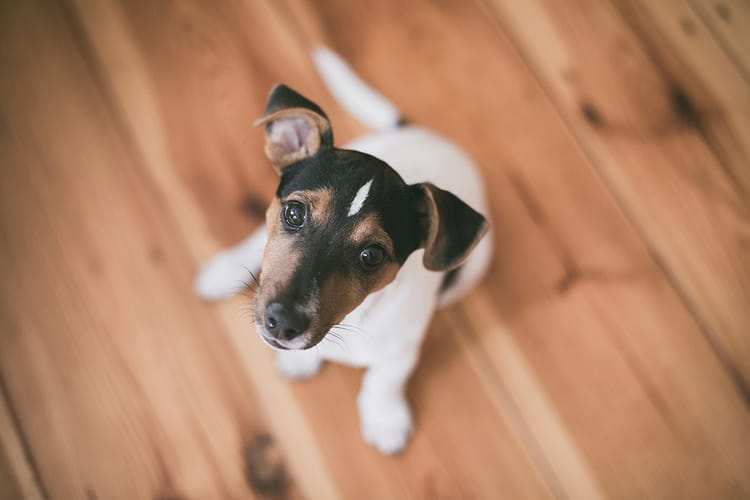How to get your dog's attention fast: Teach an interruptor cue

James and his golden retriever, Emma, had been inseparable ever since James adopted her two years ago. Everywhere James went, Emma followed and thanks to James' dedication to training, he and Emma were able to enjoy a number of adventures together.
One sunny day, James decided to take Emma to a nearby park to play fetch. As they strolled along the path, they soon encountered another dog – a small poodle who greeted Emma with a play bow. James and the poodle's person decided to turn the two dogs loose in the nearby fenced play area. Emma and the poodle took a liking to one another immediately, bounding off into an open field for a game of tag. As they wrestled on the grassy expanse with joyous abandon, James kept an eye Emma – sometimes she would get too rambunctious when playing with other dogs.
Worry started to set in as he watched the poodle leave the wrestling match and hide under a bench to avoid Emma. James hastily called out “Hello!”, an interruptor cue he had trained Bailey on months prior. Thankfully, it worked like a charm – Emma stopped dead in her tracks and turned around expectantly towards him for further instruction.
The poodle took the moment to jet back towards its owner - leaving James relieved! He quickly praised Emma for listening so well before offering her some tasty treats as reward, which she was more than happy to accept!
Can you relate to James and Emma's experience, or does it feel like trouble getting your pup to pay attention? Does it seem like no matter how loud you yell or how much you wave your arms, they just keep running around and ignoring you? Don't worry -- we've all been there! But with a few simple steps, you can teach your dog an interruptor cue that will have them paying attention in no time. Read on for our top tips on teaching your pup the interruptor cue and get ready to become the master of training!
Teach your dog to snap to attention
Gather your treats and put your dog leash. Once you have gathered your treats and leash, it is important to find a quiet spot without too many distractions. You want your dog to be able to focus on the task at hand, so making sure the environment is conducive to learning is key. For example, if you are trying to teach your pup an interruptor cue in a park, chances are they will get distracted by the other dogs or people walking by before they can pick up the cue.
Training steps:
- Watch quietly for your dog to pay attention to you. If you need to move backwards or walk away from your dog to catch his attention, that's fine
- As soon as your dog looks at you, say “Hello!” or another attention-getting word or phrase. If you use a moderately loud/serious tone of voice, your dog will learn to pay attention to the tone of your voice as well as the word.
- This step is extremely important! Feed your dog treats immediately, as soon as you say the word or phrase. Your dog does not need to sit, lie down, or come to you to get the treats. Simply feed three or four delicious treats in a row.
- Repeat Steps 1-4 for two or three sessions in different locations, 10-12 times per session.
- Once your dog “snaps to attention” when you say “Hello!”, you are ready to test it a bit. Try waiting to say “Hello” when your dog is not focused on you, but not totally distracted either. For example, use your cue when your dog is sniffing the ground or gazing away from you but not laser-focused on something else.
- Repeat 10 to 20 times (you may have to take a little more time, spacing these out in random intervals as your dog will start paying close attention).
- Test your interruptor cue with a real-world scenario! When your pup is in the middle of something else, like sniffing the ground or chasing a squirrel, say “That’s enough!” and watch as they quickly switch their attention to you. If she passes the test (she stops playing and looks at you expectantly), feed her your treats and let her go back to playing. In the event you do not want her to continue playing, have a leash handy so you can clip it on, and feed even more treats once she’s clear of the other dog.
- Practice your interruptor cue often with and without other dogs, so it stays sharp. Make sure to reward your dog with treats for making the right choice! As you continue this practice, you'll find that your pup is able to stop what they're doing and pay attention to you faster and more reliably.
By following these simple steps, you can teach your pup an interruptor cue that will have them paying attention to you in no time. Remember, start by gathering treats and standing in a quiet spot without distractions. You can move backwards to catch their attention if need be. When they finally pay attention, say your word or phrase of choice with a moderately loud/serious tone and immediately feed treats three or four times in a row. Practice this 10-12 times per session for two or three sessions at different locations until your dog “snaps to attention” when you give your cue. Finally, test it out in real-world scenarios like when they're sniffing the ground or chasing squirrels - when they switch their focus to you quickly reward them with treats! With practice and consistency, soon your pup will be able to interrupt themselves faster and more reliably than ever before.
Teaching interruptor cues requires patience and consistency. Give yourself and your pup plenty of time and praise during each practice session - eventually, it'll become second nature!




